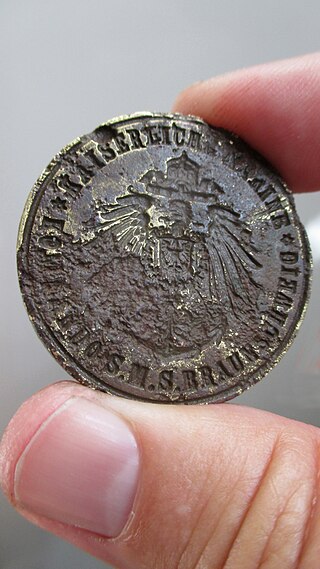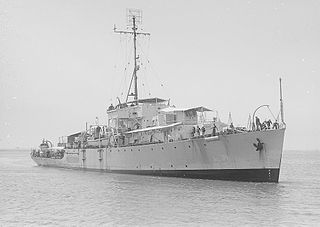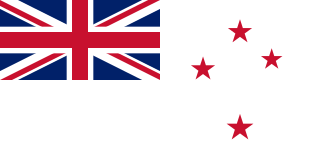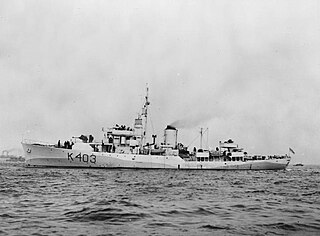| Historic ships of the Royal New Zealand Navy |
|---|
 |
| Alphabetical list |
Commissioned patrol boats of the Royal New Zealand Navy from after World War II.
| Historic ships of the Royal New Zealand Navy |
|---|
 |
| Alphabetical list |
Commissioned patrol boats of the Royal New Zealand Navy from after World War II.
| Name | Dates | Career | Fate |
|---|---|---|---|
| HMNZS Hawea (1975) | 1975–1999 | ||
| HMNZS Pukaki (1975) | 1975–1999 | ||
| HMNZS Rotoiti (1975) | 1975–1999 | ||
| HMNZS Taupo (1975) | 1975–1990 |
| Name | Dates | Career | Fate |
|---|---|---|---|
| HMNZS Hinau (P3556) | 1985–2007 | ||
| HMNZS Kahu (A04) | 1978–2009 | Training vessel, backup diving tender | |
| HMNZS Kiwi (P3554) | 1983–2007 | ||
| HMNZS Moa (P3553) | 1984–2007 | ||
| HMNZS Wakakura (P3555) | 1985–2007 |
| Name | Dates | Career | Fate |
|---|---|---|---|
| HMNZS Hawea (P3571) | 2008–current | In active service | |
| HMNZS Pukaki (P3568) | 2008–2019 | Decommissioned, Sold to Irish Navy | |
| HMNZS Rotoiti (P3569) | 2007–2019 | Decommissioned, Sold to Irish Navy | |
| HMNZS Taupo (P3570) | 2008–current | In active service |
| Name | Dates | Career | Fate |
|---|---|---|---|
| HMNZS Otago (P148) | 2007–current | In active service | |
| HMNZS Wellington (P55) | 2007–current | In active service |
Rear admiral is a senior naval flag officer rank, equivalent to a major general and air vice marshal and above that of a commodore and captain, but below that of a vice admiral.

An ensign is the national flag flown on a vessel to indicate nationality. The ensign is the largest flag, generally flown at the stern (rear) of the ship while in port. The naval ensign, used on warships, may be different from the civil ensign or the yacht ensign. Large versions of naval ensigns called battle ensigns are used when a warship goes into battle. The ensign differs from the jack, which is flown from a jackstaff at the bow of a vessel.

HMNZS Achilles was a Leander-class light cruiser, the second of five in the class. She served in the Royal New Zealand Navy in the Second World War. She was launched in 1931 for the Royal Navy, loaned to New Zealand in 1936 and transferred to the new Royal New Zealand Navy in 1941. She became famous for her part in the Battle of the River Plate, alongside HMS Ajax and HMS Exeter and notable for being the first Royal Navy cruiser to have fire control radar, with the installation of the New Zealand-made SS1 fire-control radar in June 1940.

HisMajesty's Ship, abbreviated HMS and H.M.S., is the ship prefix used for ships of the navy in some monarchies. Derived terms such as HMAS and equivalents in other languages such as SMS are used.

HMAS Lachlan (K364/F364) was a River-class frigate that served the Royal Australian Navy (RAN) from 1945 to 1949. The vessel was later transferred to the Royal New Zealand Navy serving as surveyor until 1975 and was eventually scrapped in 1993.

The Royal New Zealand Navy is the maritime arm of the New Zealand Defence Force. The fleet currently consists of nine ships. The Navy had its origins in the Naval Defence Act 1913, and the subsequent purchase of the cruiser HMS Philomel, which by 1921 had been moored in Auckland as a training ship. A slow buildup occurred during the Interwar period, and then perhaps the infant Navy's most notable event occurred when HMS Achilles fought alongside two other Royal Navy cruisers at the Battle of the River Plate against the German ship, Graf Spee, in December 1939.
New Zealand Naval Forces was the name given to a division of the Royal Navy. The division was formed in 1913 and it operated under this name until 1921, when it became the New Zealand Division of the Royal Navy.

The Anzac class is a ship class of ten frigates; eight operated by the Royal Australian Navy (RAN) and two operated by the Royal New Zealand Navy (RNZN). During the 1980s, the RAN began plans to replace the River-class destroyer escorts with a mid-capability patrol frigate and settled on the idea of modifying a proven German design for Australian conditions. Around the same time, the RNZN was seeking to replace their Leander-class frigates while maintaining blue-water capabilities. A souring of relations between New Zealand and the United States of America in relation to New Zealand's nuclear-free zone and the ANZUS security treaty prompted New Zealand to seek improved ties with other nations, particularly Australia. As both nations were seeking warships of similar capabilities, the decision was made in 1987 to collaborate on their acquisition. The project name is taken from the Australian and New Zealand Army Corps of the First World War.

HMNZS Leander was a light cruiser which served with the Royal New Zealand Navy during World War II. She was the lead ship of a class of light ships, the Leander-class light cruiser and was initially named HMS Leander.

Devonport Naval Base is the home of the Royal New Zealand Navy, located at Devonport, New Zealand on Auckland's North Shore. It is currently the only base of the navy that operates ships, and has been in use as a navy base since 1841. The base consists of HMNZS Philomel, the Fleet Support Organisation, and the Fleet Personnel and Training Organisation.

HMNZS Wellington was a Leander-class frigate of the Royal Navy and the Royal New Zealand Navy (RNZN). Originally commissioned in 1969 for the Royal Navy as HMS Bacchante, she joined the RNZN in 1982. She was decommissioned in 1999 and sunk in 2005.

The Australia Station was the British, and later Australian, naval command responsible for the waters around the Australian continent. Australia Station was under the command of the Commander-in-Chief, Australia Station, whose rank varied over time.
HMNZS Waikato (F55) was a Leander Batch 2TA frigate of the Royal New Zealand Navy (RNZN). She was one of two Leanders built for the RNZN, the other being the Batch 3 HMNZS Canterbury. These two New Zealand ships relieved British ships of the Armilla patrol during the Falklands conflict, freeing British ships for deployment.
HMNZS Tui, formerly USNS Charles H. Davis (T-AGOR-5), was one of nine Conrad class oceanographic ships built for the United States Navy (USN), that later saw service in the Royal New Zealand Navy (RNZN). Serving with the USN from 1963 to 1970, these ships were designed to perform acoustic experiments on sound transmission underwater, and for gravity, magnetism and deep-ocean floor studies.

HMNZS Arbutus was a modified Flower-class corvette of the Royal New Zealand Navy (RNZN). Built for the Royal Navy as HMS Arbutus, the corvette was transferred to the RNZN on completion in 1944, and operated in the British Pacific Fleet during the final year of World War II. In April 1947, Arbutus was one of the units involved in a mutiny over poor pay and working conditions. She was decommissioned in 1948 and broken up for scrap in 1951.

HMNZS Endeavour was a Royal New Zealand Navy Antarctic support vessel. She was the first of three ships in the Royal New Zealand Navy to bear that name.
HMNZS Moa (T233) was a Bird class minesweeper of the Royal New Zealand Navy (RNZN) that served during World War II.

The New Zealand Division of the Royal Navy also known as the New Zealand Station was formed in 1921 and remained in existence until 1941. It was the precursor to the Royal New Zealand Navy. Originally, the Royal Navy was solely responsible for the naval security of New Zealand. The passing of the Naval Defence Act 1913 created the New Zealand Naval Forces as a separate division within the Royal Navy.

The Royal New Zealand Naval Volunteer Reserve (RNZNVR) is the volunteer reserve force of the Royal New Zealand Navy (RNZN).